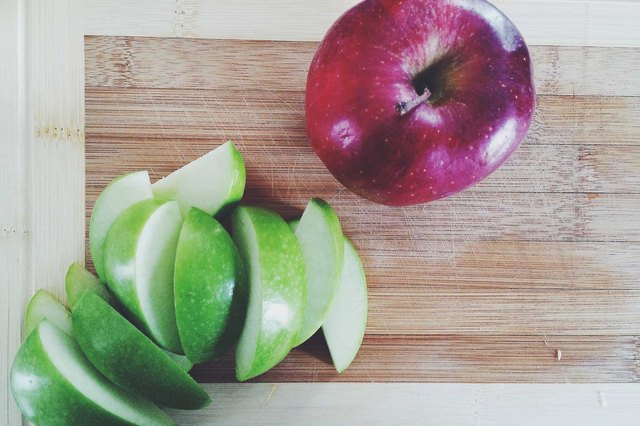There seem to be hundreds of food rules now. Do this, don't eat that, drink this, but only at the full moon on Wednesday. Some myths are believable, but most of them are completely absurd. Although there are a lot of new nutrition researches, some food and nutrition myths seem only lasting. It's time to expose when sticking to these methods will prevent you from achieving weight loss or improving your nutrition. Here are a dozen misconceptions you should give up and why some fresh ideas can make you healthier, slimmer and happier. Myth 1: you crave food because you lack some nutrients. Most of us must be short of pizza, ice cream and chips. According to the USDA, the nutrients most Americans lack include vitamins A, D, e and C, folate, calcium, magnesium, iron, fiber and potassium. However, we rarely hear about people's desire for food containing these nutrients, such as carrots, chickpeas or apples. On average, we also eat too much saturated fat, sodium and sugar, but those who want to drive tend to be high on all three. Generally speaking, it's important to listen to your body. However, food craving is often caused by non nutritional factors, such as stress, emotion and social interaction, rather than the lack of nutrients.
Credit: Fashion Tolstoy / 2020 Credit: leckej / Adobe many people still avoid high-fat food, such as avocado or choose low-fat salad dressing. But the fact is that getting enough "good" fat is important for overall health and weight control. The current recommendation for fat is that up to 35% of calories per day should come from fat. For a woman who eats 1600 calories a day, that's more than 60 grams of fat. In addition to helping to maintain healthy hair and skin, eating fatty vegetables helps to promote the absorption of certain protective antioxidants. A study at Iowa State University found that when men and women ate salads with fat free dressings, they absorbed almost no antioxidants. Delicious, healthy choices include extra virgin olive oil, avocado, nuts, seeds and nut / seed butter. Credit: marzky ragsac Jr. / Adobe rock back to vegetarians are advised to "supplement" their protein by eating certain foods at the same time, such as beans and rice. The idea is to pair a particular food with a low amino acid content with another food that provides it to provide all the components needed to maintain and heal cells using plant proteins. However, new research shows that it is not necessary to eat certain foods at the same time, because the body maintains a "pool" of important amino acids when it needs to be supplemented. To maintain a balance and keep your amino acid "piggy bank" well stocked, just make sure you eat enough calories and a variety of healthy plant foods, including agricultural products, whole grains, nuts, seeds and beans (beans, lentils and peas). Credit: Starwood / motion / Getty Images credit card: Calvert Byam / moment / Getty Images Credit: Karin Dreyer / blend images / Getty Images Credit: Darby / Twenty20 Myth 2: calories are not all calories are the same, so simply calculating calories and keeping them within a certain range may not produce the results you expect. For example, a recent study from Pomona College found that when healthy women eat foods with similar carbohydrate, protein and fat content, they burn 50% more calories when eating whole foods than when eating high-quality processed foods. In other words, a 300 calorie blueberry muffin with sugar and refined flour doesn't equal a 300 calorie oatmeal with blueberries and nuts. Bottom line: when it comes to calories, quality rules. Listen now: Marie forleo shares her secret to avoid burnout But a recent Harvard study found that avoiding fruit altogether is not necessary for weight management. Researchers found that eating more than one serving of fruit a day in more than 130000 adults did not lead to weight gain, which in fact resulted in an additional half pound loss in four years. Use fruit as a smart weight management strategy to replace less healthy, higher calorie snacks and desserts. For example, a cup of strawberries with two 70% dark chocolates can provide about 135 calories, 275 fewer than chocolate bars in coffee shops. Too much at night: sounds familiar? Following this diet may make it harder for you to control your weight, according to a UCLA study. The researchers looked at the relationship between calorie intake time and BMI or body mass index. They found that eating one more day at noon was associated with a lower risk of being overweight or obese, while eating more at night was associated with a higher risk. If you want to lose weight, follow the old saying: "breakfast like a king, lunch like a prince, dinner like a beggar." At the very least, don't make dinner the most abundant meal of the day, especially if you're not active at night, which can lead to excess calories and eventually your fat cells can't eat.
myth 5: low fat diet is the best

myth 6: if you exercise, you can eat anything you want to lose weight guarantee. A recent study at Arizona State University looked at the effects of exercise on 81 previously sedentary overweight women. While following the regular diet, the group took part in a 12 week fitness program. The researchers found that although the women became healthier after three months, there was no significant weight loss, and 70% of the women actually gained weight. Exercise has many benefits, but it has nothing to do with losing weight, but if you want to lose weight, you should not regard exercise as a panacea, but pay attention to how much you eat and what you eat. Must match protein

fallacy 8: brown bread means it's made of whole grains, and when it comes to bread, its appearance can be deceiving. The bread may be brown because it's Caramel colored, not because it's whole wheat. In fact, if whole wheat bread is made of naturally lighter colored whole wheat bread, such as oats, ryes, and corn, they may not be brown at all. Instead of choosing by color, read the ingredients list. Brown rice and wild rice, buckwheat, oats and quinoa are all whole wheat, but if you are matchingIf you don't see the word "whole wheat" in the list, then these grains may have been refined. You can also find the word "100% whole wheat" on the package. Keep in mind that bread with other terms may still be refined, including "whole grain bread", "100% wheat bread", "ground wheat bread", "bran bread" and "whole grain bread".
myth 9: no gluten intolerance. Gluten free heat is growing. While some people fully believe that giving up gluten helps them feel better, others think it's "all in their heads." In fact, there is a recognized condition called non celiac glutenin sensitivity (ncgs). When gluten remains in the diet, people who have negative tests for celiac disease may still experience unwanted symptoms, including "fuzzy mind", depression, abdominal pain, abdominal distension, constipation, headache, bone or joint pain and fatigue. Unfortunately, without a simple test of NCG, it can be a challenge to go to gluten free yourself. Therefore, if you think you may have this condition, please consult a registered dietitian for guidance.
myth 10: sugar free soda is healthy or overall healthy. The study, published in the Journal of the American Geriatric Association, found that an increase in soda intake was directly related to an increase in abdominal fat in adults 65 and older. Another study from the American Heart Association concluded that daily soda consumption was associated with a higher risk of stroke, heart attack and vascular related death. For healthier calorie free options, let your old water go. If you don't like the taste of boiled water, add lemon, lime, fresh mint, ginger or some mashed fruit to beautify it.
myth 11: the bad taste of healthy food is attributed to the method of making healthy food. To be sure, grilled chicken boneless, peeled chicken breast and unsalted steamed vegetables are not very attractive. But you don't need to fry or pour in cream sauce to make them taste good. Start experimenting with herbs and spices, including garlic, basil, rosemary, dill, ginger, chili, cinnamon, cumin and turmeric, as well as low calorie but delicious additives, such as fresh orange juice, Dijon mustard and vinegar. An intervention study at the University of Maryland School of Medicine found that teaching high school students to use herbs and spices improved their attitudes towards healthy foods, including vegetables, whole grains and lean protein. Healthy dishes can make people salivate. What do you think of Yulia davydovic / iStock / Getty Images? Are you abandoning a food myth that leads to improved nutrition and health? Please leave a comment below and let us know. Your experience may help motivate and motivate others.











